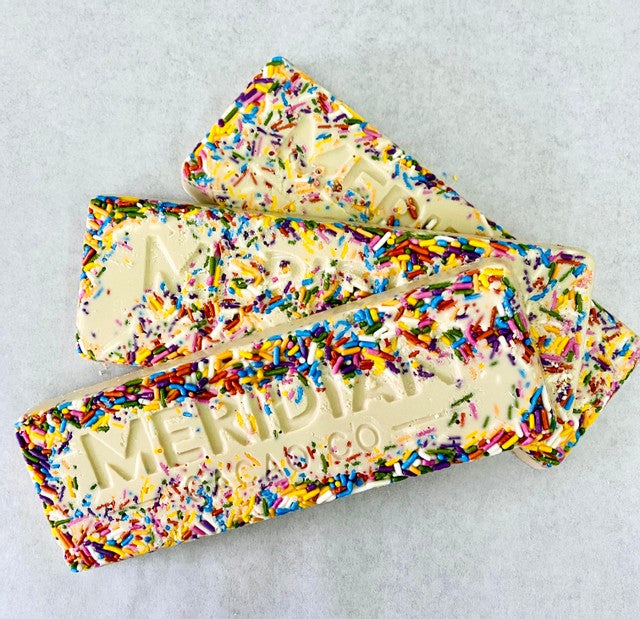
Tasting Chocolate
Share
Part of the fun of sensory training is opening your eyes, nose, fingertips, and tastebuds to everything around you, especially if it’s not cacao. This will help to make a mental catalog of experiences to draw on later when tasting. Below we’ve laid out steps for you to share an easy, fun, and educational tasting experience.
- Use 3-5 different types of chocolate bars: Too many samples will blanket your palate and mask your senses. Bring cold-stored chocolate to room temperature.
- Have water available: Sip room temperature water between bites.
- Set the table: Arrange bar selections from most mellow to strongest, darkest, and most acidic.
- Prepare your senses: Sip water before and after tastes. Try to avoid eating a large meal or uniquely flavored snack before tasting. Avoid using fragrant lotion or hand soap before tasting.
- Smell the chocolate: Inhale and note any aromas beginning to stimulate your olfactory senses.
- Time to bite: Try one or two small bites and move the pieces around to cover your tongue and cheeks. Make note of any flavors, textures, and sensations as the sample melts.
- Pause and evaluate: Let the chocolate melt on your tongue and move it around over 10-20 seconds. Notice the flavors as they progress or if they quickly fade. Look for flavors you recognize and think about common pairings. If you notice cinnamon do you also perceive other baking spices: nutmeg, clove, cardamom, maybe brown sugar? What flavors remain after you’ve swallowed the chocolate? Are they different from the initial flavors? How does your mouth feel, coated in a buttery film or dried out?
- Write it down: Write down the name, percent, age, and origin of the bar, if provided on the packaging. Note all of your sensory analysis.
- Repeat: Take a sip of water. Try another piece of the same chocolate now that your senses are working with these flavors, aromas, and textures. Write.
Flavor Profiles
Origin terroir, fermentation, drying, roasting, and so much more impact the overall flavor profile. Below is a list of common pairings and flavor notes.
- Fresh Fruit: cherry, coconut, dark cherry, citrus such as orange, lemon, and grapefruit, tropical lychee and mango, red berries like strawberry or raspberry, banana, sour cherry, stone fruit
- Dried Fruit: red currant, raisin, date,fig, prune, apricot,
- Earthy: mushroom, wood, soil, moss, loam, grass, hay, ash
- Nutty: hazelnut, almond, walnut, peanut, marzipan, nut skin, roasted
- Caramel: burnt caramel, brown sugar, butterscotch, creme brulee, molasses, toffee, dulce de leche
- Chocolatey: brownie batter, baked brownie, cocoa powder, fudge, milk chocolate
- Spicy: black pepper, nutmeg, cinnamon, anise, clove, cardamom, vanilla, tobacco, coffee
- Floral: orange blossom, rose, jasmine, black tea, rooibos, herbal, bell pepper, honey
- Dairy: cream, butter, sweet milk, yogurt
- Other: astringent, acidic, bitter, malty, savory, smoky, tart, mellow
